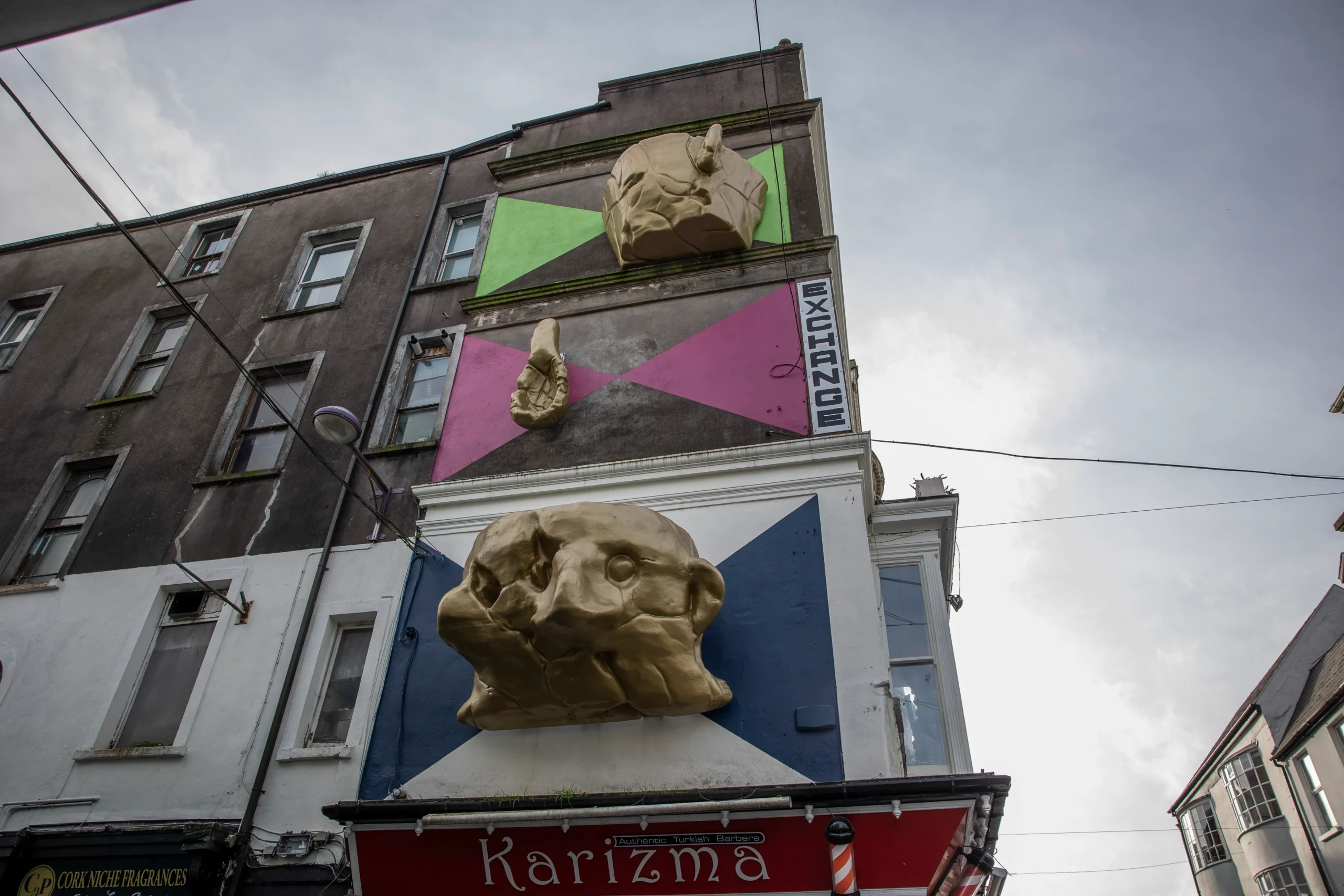Tap




Occupying three floors of a five-floor building on the corner of Princes Street and Oliver Plunkett Street, this artwork draws on locally discovered archaeological finds, and geometric patterns used in decoration in the Bronze Age.
The work is situated on the façade of the building on Princes Street, which has no windows on the upper levels. Each floor of the building has an elaborate cornice at the top, so that it seems as though there were three shelves stacked on top of each other. On each of the three floors, the walls have been painted with large triangle patterns. On the first floor, navy and white triangles; on the second, dusty pink against the natural grey of the building’s plaster work; and on the third, a bright, fresh green, also contrasting with the plaster grey.
On each so-called shelf, a giant replica of the archaeological finds has been mounted. On the first floor is the artefact that gives the artwork its name – The Face
Cup. Originally a practical piece of dining ware, this has been blown up to well over 2 metres high and more than 3 metres wide. Replicating a hand-crafted piece of pottery, its surface is undulating, and shaped by working fingers and thumbs into the soft clay. A face has been carved into the front – two round eyes, a protruding nose, and a thin line for a mouth. An ear lug has been well-formed on the left-hand side, with just a vague ear shape on the right. This face cup was hand-carved in Styrofoam, covered with a smoothing layer of fibreglass, and then painted a dull, antique gold. Though the objects seem to be massive and weighty, they are actually quite light. They are affixed to the wall with stainless steel brackets.
On the second floor is a spoon – its handle pointing upwards, and with deep cracks through its bowl. This too has been made larger than life, at 1.8 metres in height, and 0.75 metres across. Like the face cup, it has been carved and covered to seem like hand-shaped pottery, and painted a dull, antique gold.
On the third floor sits half a cup, as though the other half were inside the building, its handle jutting out over the road. Built and finished in the same manner as the spoon and face cup, this is the last of the three Bronze Age finds.
This artwork sits over the ground floor which is a retail space. One of the former uses for this building was as a theatre in the eighteenth century. It was called the Exchange Building then, and there is a sign that reads “Exchange” on the second floor, near the spoon.